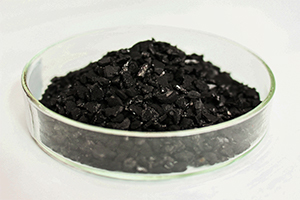Activated Carbon, also known as activated charcoal or coal, is a highly porous substance prized for its exceptional ability to purify air, gases, and water. This desiccant eliminates volatile and malodorous particles, offering a clean and odor-free environment.
Controlling Odours and Moisture
Enhanced Purification Capabilities
Activated carbon can also remove unpleasant odours from industrial applications where unwelcome smells may arise. Developed from natural coconut shells, it is safe for use in food production and industrial processes.
We also offer activated carbon desiccant packets that can be combined with silica gel beads for enhanced adsorption efficacy. This combination greatly enhances the capacity to control both odour and moisture. This desiccant swiftly absorbs toxic compounds and water vapours through its carbon molecules.
Gas Purification
Activated Carbon purifies compressed air and gas and removes hydrocarbons. Utilising charcoal beds with a high adsorption capacity, these gases are trapped and preserved as they decompose rapidly. During the process, the charcoal particles collect the solids and allow the filtered air to flow through seamlessly.
Chemical Purification
In large-scale chemical and pharmaceutical processes, the Activated Carbon can be used to purify organic solutions laden with impurities. The desiccant can be either mixed with the solution and then filtered off or used directly in the filter. This approach is highly effective in eliminating unwanted impurities from these solutions.
Environmental Applications
Activated carbon removes pollutants from air and water streams in various industrial processes, including purification and filtration. Its effectiveness in water treatment stems from its multifunctional properties such as the ability to eliminate impurities, neutralise odours, and remove harmful chemicals such as chlorine and pesticides.
Particle Size: Available in a variety of particle sizes, from fine powder to granules and extruded forms. The size of the particles is significant because it influences the rate of adsorption and the overall efficiency of the activated carbon in trapping impurities.
Adsorption Capacity: This refers to the volume of impurities that the desiccant can remove from air or liquid. The adsorption capacity varies depending on the nature of the impurities and the specific surface area of the Activated Carbon.
Iodine Number: The iodine number is a measure of the desiccant’s ability to adsorb certain organic compounds, including chlorinated solvents and aromatic hydrocarbons. This metric is often used as a general indicator of the carbon’s overall adsorption capacity.
Ash Content: Ash content indicates the level of inorganic material present in the activated carbon, such as minerals and metals. Generally, a lower ash content is preferred in many applications, as high levels of inorganic materials can interfere with the carbon’s adsorption effectiveness.
Moisture Content: The performance of activated carbon can be affected by its moisture level – typically, a lower moisture content is more desirable for effective adsorption.
pH Level: The pH of desiccant can influence its adsorption capacity and reactivity. Depending on the manufacturing process and intended application, Activated Carbon can range from acidic to neutral to alkaline.
Bulk Density: Bulk density is the weight of the activated carbon per unit volume. This characteristic is important for practical handling and transportation considerations, as it impacts how much space the carbon will occupy and its weight for shipping purposes.
Giới Thiệu Sản Phẩm Than Hoạt Tính: Download


